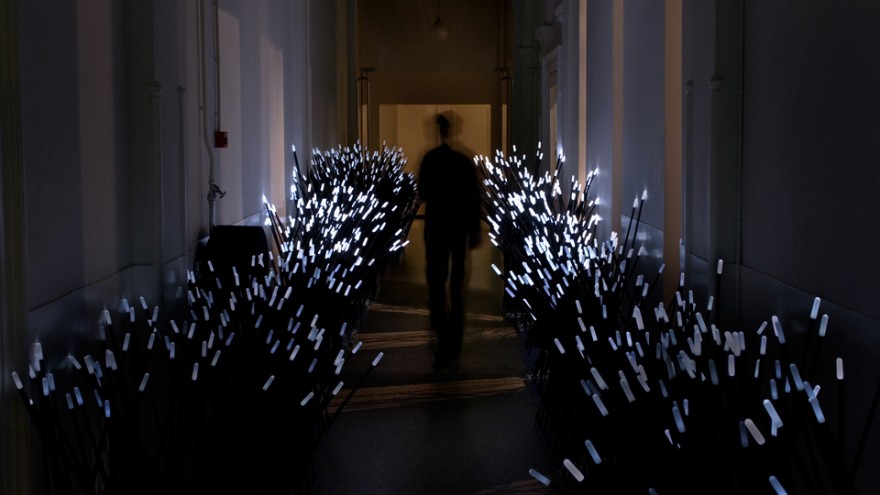Encouraging visitors to be participants instead of observers, Daan Roosegaarde's "Dune" project allows the city, nature and people to interact.
Dutch designer and innovator Daan Roosegaarde’s "Dune" project is a series of interactive landscapes, which interact with human behaviour. The project creates a hybrid between nature and technology through using hundreds of fibres, which brighten according to the sounds and motions of passing visitors.
Dune is made up of fibres, steel, microphones, sensors, speakers and software.
I would like to invite the visitor to become a participant instead of an observer, says Roosegaarde.
The project was started in 2006 and has since taken shape in four different versions and settings.
The Dune 4.0 was the first in the series and installed along passageways at NIMK in Amsterdam.
The upgraded version of the installation, the Dune 4.1 was placed in the Maastunnel for the Rotterdam 2007 City of Architecture. Using all the same materials, the embedded technology of the Dune 4.1 revealed a sensual layer of interaction over the existing architecture of the Maastunnel in Rotterdam.
The main goal of the project is always to act as a second layer of information and experience, over the existing architecture, says Roosegaarde.
The Dune 4.2 is the first of the series to be a permanent landscape feature. Situated alongside the Maas River in Rotterdam, the 60-metre installation encourages public interaction and a daily "walk of light".
Investigating nature in a futuristic relation to urban space, the Dune X is the first to be installed outside the Netherlands. Designed for the 18th Sydney Art Biennale in 2012, the Dune X was installed along a 42-metre corridor of the Dogleg Tunnel at Cockatoo Island in Sydney.






















